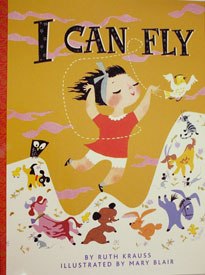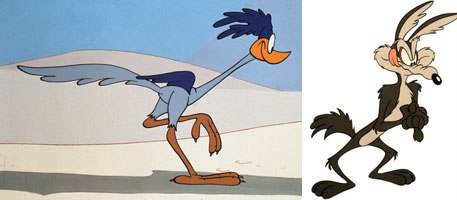Jim Korkis uncovers the secret life of animators, who in lean times or more prosperous times have all worked in the world of comicbooks.

In 1999, creator Craig McCracken followed in the footsteps of other great animators and illustrated a Powerpuff Girls Little Golden Book entitled, Big, Terrible Trouble in 1999.
What do Robert McKimson, John Hench, Michael Maltese, Bill Peet, Jack Hannah and other legends of the Golden Age of Animation have in common with the following stories of modern animation legends?
Series creator Craig McCracken illustrated a Powerpuff Girls Little Golden Book entitled, Big, Terrible Trouble in 1999. Producers of Batman: The Animated Series Paul Dini and Bruce Timm wrote and illustrated a comicbook story called, Mad Love for the Batman Adventures comicbook.
Animator Chris Bailey who directed Mickey Mouse in Runaway Brain and later was a CG animation supervisor on such films as Inspector Gadget and Mighty Joe Young found time between his day jobs to bring to life the comicbook adventures of his original creation, Major Damage.

Batman: The Animated Series producers Paul Dini (left) and Bruce Timm wrote and illustrated a comicbook story called Mad Love for the Batman Adventures comicbook.
Animator Tom Bancroft spent 12 years working on Disney animated features from Beauty and the Beast to Atlantis but also founded a comicbook publishing company (Funnypages Press) to publish his original comicbook, Opposite Forces. The legendary Glen Keane is the author and illustrator of a series of Bible parable childrens books featuring Adam Raccoon.
These animators and others are following a long established animation tradition. Many animation legends supplemented their paychecks by supplying work for advertising, childrens books, comicbooks, comic strips, coloring books, storyteller record albums and more. During the lag time between projects or just to become more independent from the whims of the established studios, animators discovered that they could generate additional income to pay their mortgage or car payments or bar tabs or gambling debts by often anonymously producing work for these markets.

Mary Blair, whose inspired design of Its a Small World is still inspiring today, illustrated I Can Fly.
A Golden Opportunity
In 1941, childrens books normally sold for two or three dollars, which made them a luxury for many families. Little Golden Books were created as an affordable alternative but it also spawned a new market for animation storymen, layout artists, animators, color stylists and others to express themselves creatively while earning some money on the side.
Imagineer Xavier Attencio may be best known for writing the songs for Pirates of the Caribbean and Haunted Mansion, but he also illustrated Mickey Mouse Goes Christmas Shopping. Mary Blair whose inspired design of Its a Small World is still inspiring today, illustrated I Can Fly. Yale Gracey (Pluto Pup Goes to Sea), Bill Justice (Grandpa Bunny), Sam McKim (Toby Tyler) Eyvind Earle (Peter Pan and Wendy), Milt Banta (Three Little Pigs), Tom Oreb (Once Upon a Wintertime) and so many others who contributed in a variety of roles to animated classics are credited with doing Little Golden Books.

The legendary Glen Keane is the author and illustrator of a series of Bible parable childrens books featuring Adam Raccoon.
Simon & Schuster had a more expensive line of childrens books and many famous animation artists like John Hench (Adventures of Mr. Toad), Claude Coats (Lady and the Tramp) and Mary Blair (Uncle Remus) contributed there as well. Storyman Bill Peet left the Disney Studios and found fame illustrating popular childrens books. Other animators like Julius Svendsen werent as successful.
From Screen To Page
Comicbooks also provided a lucrative opportunity for animators. Western Publishing was reprinting Disney newspaper comic strips in their comicbooks but the backlog got alarmingly low. Bob Karp, who was writing the Donald Duck comic strip at the time, was brought in to prepare a script based on the storyboard for an unmade feature entitled Morgans Ghost. The Disney Studio suggested Carl Barks and Jack Hannah who had been working as storymen on the Donald Duck animated shorts as artists who could convert this script into a 64-page, four-color comicbook. The comicbook, Donald Duck Finds Pirates Gold, was the first original comicbook story featuring the famous quackster and began a long comicbook career for Carl Barks.
We divided up the pages and worked on weekends and evenings. It was clearly understood we couldnt do it at the studio because this was an outside job. Im guessing I penciled about a page and half to two pages a weekend. We would draw it up in blue pencil and then it would have to be seen by the publishing company before we went ahead with the inking. Carl and I had several meetings on the weekends so that the props we were drawing looked the same. I remember having a lot of fun with it. Also, I was able to pick up a little extra money doing something I liked. I remember very little about doing the work Im afraid because it just didnt seem significant to me. It was just a way to pick up some extra cash, said Jack Hannah when I interviewed him in the 1970s.

Simon & Schuster had a more expensive line of childrens books that featured many famous animation artists like John Hench.
Soon other Disney animators from Walt Kelly to Dick Moores and Paul Murry were finding work doing Disney related comicbooks for Western Publishing so satisfying creatively and financially that some even left the field of animation.
Animators Go Shopping
Ben Sangor and Richard Hughes ran a comicbook shop from 1942 to around 1950 using animators from the Fleischer and Famous studios. Having no comicbook writers and artists themselves, some publishers were supplied with completed stories by other companies called shops. Shops created work for several publishers simultaneously.
In 1943, animator Jim Davis who had worked on Snow White and the Seven Dwarves and later the Superman cartoons moved to Los Angles and set up a shop to act as an agent for west coast animators. He utilized the talents of animators like Ken Hultgren, Bob Karp, Lynn Karp, Hubie Karp, Al Taliaferro, Jack Bradbury, Howard Swift, Lloyd Turner, Cal Howard, Bob Wick Wickersham, Owen Fitzgerald, Don Arr, Al Hubbard and many others to produce funny animal comicbooks.
These men were paid roughly $15-25 to write, pencil and ink a page. While still working full time in animation, Davis and his shop drew mostly funny animal stories for Pines, National and ACG. Obscure titles like Ha Ha and Giggle comics feature some of the purest work by these talented animators.

Michael Maltese, who labored on Looney Tunes during the day, also illustrated and wrote the comicbook adventures of Road Runner and Coyote. Courtesy of Warner Bros. Animation.
In addition to supplying art for most of the Disney characters in Dell comics, animator Jack Bradbury also drew comicbooks featuring the Walter Lantz stable of characters, the Warner Bros. characters and Bob Clampetts puppet version of Beany and Cecil. When the comicbook series started doing stories based on the animated version of Beany and Cecil, the artist was Willie Ito who had worked on the animated series.
Comicbooks Get the Animation Touch
Michael Maltese, Lloyd Turner, Tom McKimson and others who labored on Looney Tunes during the day would find time on the side to work on the comicbook adventures of the Warner Bros famous characters. Maltese co-created the Road Runner and Coyote in the animated world and also wrote many of their comicbook adventures as well.

Otto Messmer and Joe Oriolo worked on Felix the Cat animated cartoons but also picked up some additional money chronicling the famous cat's antics in comicbooks. © Felix the Cat Prods.
In 1947, Tom McKimson, brother of Warners cartoon director Robert McKimson, quit Warners to work full-time as art director for Western Publishing, where he supervised and created art for comicbooks, coloring books and Golden Books, many of which were directly inspired from animated cartoons. McKimson made good use of his animation connections to bring talent to these projects. In 1954, he was joined by his other brother, Charles, who had also worked on Warners cartoons.
Jim Tyer who was a superstar in animation at Terrytoons found time to illustrate Mighty Mouse and Heckle and Jeckle for comicbooks. So, too, did his fellow Terrytoons peers like Connie Rasinski, Carlo Vinci, Art Bartsch and Tom Morrison. Otto Messmer and Joe Oriolo worked on Felix the Cat animated cartoons, but also picked up some additional money chronicling the famous cats antics in comicbooks.

Other animators like Chuck Jones (left) and Gene Deitch tried to supplement their animation paychecks with newspaper strip work.
Other Opportunities
Animators like Walt Kelly, Virgil Partch, George Baker and Hank Ketcham who had worked at the Disney Studios not only found extra money, but greater recognition in the world of newspaper comic strips than they had in animation. Other animators like Gene Deitch, Dick Huemer, Pete Alvarado, Myron Waldman, Harvey Eisenberg, Frank Tashlin and even Chuck Jones also tried to supplement their animation paycheck with newspaper strip work. Tashlins newspaper strip Van Boring character parodied his former animation boss, Van Bueren, who reportedly wanted a percentage of the comic panel because he was the inspiration.
While childrens books, comicbooks and newspaper strips may seem the most likely venue for animators to earn additional money, there were several other related areas that offered opportunities including coloring and activity books, advertising and childrens record albums.

Mel Blanc re-created Daffy Duck on record, which also introduced the song, Whats Up Doc?
An animated favorite is Bob Clampetts The Great Piggy Bank Robbery written by Warren Foster. Foster picked up extra money writing another appearance of Duck Twacy in a Capitol Record storyteller album from 1949 entitled Bugs Bunny in Storyland. Mel Blanc re-created Daffy Duck portraying the famous detective and children could follow along with the story illustrations done by legendary animation director Robert McKimson. The album introduced the song Whats Up Doc?, which also appeared in the McKimson directed short of the same name the following year.
Warner Bros storymen Tedd Pierce and Michael Maltese also wrote storyteller albums featuring Warner characters.
Many legendary people in the animation industry over the decades have produced memorable work and garnered a secret paycheck by working in some of these varied markets. Many of those treasures are still waiting to be uncovered. The tradition of animators working in other media continues today and provides fans with additional stories and artwork to treasure from these masters of animation.
Jim Korkis is an award winning teacher, a professional actor and magician and a published author with several books and hundreds of magazine articles about animation to his credit. He is also an internationally recognized Disney historian whose research and writing have been used by the Disney Co. on many projects. Jim is a founding member and contributor to Walts People, a critically acclaimed series of books reprinting interviews with people who worked with Walt Disney.







